My Call
My favorite image by a mile in the last blog post was Image #1: Roseate Spoonbill in flight with nesting material. Why? Gorgeous light, sharp, and carrying a pretty big stick. But the main reason is that because the two nesting islands at Stick Marsh are located to the northwest, 99% of the images of spoonbills carrying nesting material have the bird angling away from the photographer. By recognizing a very special set of circumstances, I was able to make a quality image of one with a stick flying towards me.
BTW, thanks to the very few who commented on their favorite.
What’s Up?
Today is Monday 18 March 2024. Though the morning forecast is not good (again) — partly cloudy with a breeze from the SW switching to West, I will head down to the lake in an effort to learn more about my a9 iii and to see how the Ospreys are doing. Wherever you are and whatever you wind up doing, I hope that you have a great day.
If you plan on purchasing a Sony a9 III Mirrorless Camera (or anything else for that matter), please remember to use or write for either my Bedfords discount code or my B&H affiliate link. Folks who use one of my two affiliate links to purchase the a9 III will receive my .DAT settings (the complete camera set-up) along with a Buttons and Dials Guide.
If you would like to enjoy some incredible world class photography and photographic instruction, do yourself a favor and grab one of the three remaining spots on the two 2025 Homer Bald Eagle IPTs. Better yet, save $1000.00 by signing up for both! It will almost surely be my last ever Homer trip … Both trips will surely fill soon. See the details along with all IPT info on the recently updated page here.
Please remember to use the B&H links that are found on most blog pages and to use the BIRDSASART discount code at checkout when purchasing your new gear from Bedfords to get 3% back on your credit card and enjoy free second-day air FedEx. Please, also, consider joining a BAA IPT. You will be amazed at how much you will learn!
If an item — a Delkin flash card, or a tripod head — for example, that is available from B&H and/or Bedfords, is also available in the BAA Online Store, it would be great, and greatly appreciated, if you would opt to purchase from us. We will match any price. Please remember also to use my B&H affiliate links or to earn 3% cash back at Bedfords by using the BIRDSASART discount code at checkout for your major gear purchases. Doing either often earns you free guides and/or discounts. And always earns my great appreciation.
Save 15%!
If you’d like to try out a new lens or if you need a lens for a specific trip or project (or for an IPT), LensRentals.com is the only way to go. To save 15%, simply click on the logo link above, arrange for your rental, and type in BIRDSASART15. If you type the gear you are looking for in the search box, it will pop right up. LensRentals.com offers affordable insurance. You can decline it, opt for LensCap: Damage Only, or select LensCap: Damage & Theft. Then hit PROCEED TO CHECKOUT. After you enter all of your info but before completing your order, be sure to scroll down to Promo Code box and enter the BIRDSASART15 code to save 15%.
I checked on renting a Sony FE 70-200mm f/2.8 GM OSS II lens for a week. The cost is only $122.00. LensCap: Damage Only coverage can be added for a very low $18.00. Going with LensCap: Damage & Theft would be $27.00. The shipping charge varies. They offer an interesting program called Lensrentals HD. By signing up for this shipping discount program ($99.00/year), you’ll get free Standard Shipping on all the orders you place.
Renting a Sony 600mm f/4 GM OSS lens for a week will cost you $536.00. The two coverage options come in at $76.00 or $114.00. Less your 15% discount when you enter the BIRDSASART15 code into the Promo Code box at checkout and enter the BIRDSASART15 code in the Promo Code box at checkout to save 15%.
Remember, to save the 15% on your rental you must start your search by clicking on the logo above, or on this link: LensRentals.com


B&H
To ensure that I get credit for your B&H purchases, you can always click here. The tracking is invisible but greatly appreciated. And, you can use your PayBoo card. You must use the website to order. B&H will reopen on Fri April 14. Thanking me for the past 4000 educational blog posts could not be any easier and will not cost you one penny. Please shoot me your B&H receipt for major purchases.
Many folks have written recently stating that they purchased a Sony a1 from B&H and would like their free membership in the Sony 1 Info and Updates Group, a $150.00 value. When I check my affiliate account, their orders have not been there. When I let them know that they get credit for B&H purchases only if they use one of the many B&H affiliate links on the blog or begin their searches with this link, they are always disappointed. If in doubt, please contact me via e-mail m and request a BH link. I am always glad to help and to guide you to the right gear.
Bedfords Simplified
Click here to start your search. Choose standard shipping, and when you get to the payment page, enter BIRDSASART in the discount code box and hit apply. You will be upgraded to free second day air Fed-Ex and receive 3% cash back on your credit card once your stuff ships. Either is greatly appreciated by yours truly.
Bedfords Amazing BAA Discount Policy
Folks who have fallen in love with Bedfords can now use the BIRDSASART coupon code at checkout to enjoy a post-purchase, 3% off-statement credit (excluding taxes and shipping charges) on orders paid with a credit card. The 3% credit will be refunded to the card you used for your purchase. Be sure, also, to check the box for free shipping to enjoy free Second Day Air Fed-Ex. This offer does not apply to purchases of Classes, Gift Cards, prior purchases.
Visit the Bedfords website here, shoot Steve Elkins an e-mail, or text him on his cell phone at (479) 381-2592.
Gear Questions and Advice
Too many folks attending BAA IPTs and dozens of photographers whom I see in the field and on BPN, are — out of ignorance — using the wrong gear, especially when it comes to tripods and more especially, tripod heads. And the same is true in spades when ordering new camera bodies or lenses. My advice will often stave you some serious money and may help you avoid making a seriously bad choice. Please know that I am always glad to answer your gear questions via e-mail. If you are desperate, you can try me on my cell at 863-221-2372. Please leave a message and shoot me a text if I do not pick up.
|
|
|
These images were created down by the lake near my home at Indian Lake Estates, FL on 16 March 2024. I used the handheld Sony FE 300mm f/2.8 GM OSS Lens (Sony E) with the Sony FE 1.4x Teleconverter and the ridiculously amazing Sony a9 III Mirrorless Camera. The exposure was determined via Zebra technology with ISO on the Thumb Dial. ISO 2500: 1/4000 sec. at f/4 (wide open) in Manual mode. When evaluated in RawDigger, the raw file brightness was determined to be almost one full stop too dark. AWB at 8:27:16am on cloudy morning. Tracking: Expand Spot/AF-C with Bird Face/Eye detection enabled performed well. Be sure to click on the image to enjoy a high-res version. Ospreys copulating in the old eagle nest tree — these are the two originals from which the composite below was created. |
New Tenants Moving In
The Ospreys had been hanging out at the old eagle nest tree for several weeks. On the morning of the 15th, I made some nice incoming flight images with the bird carrying some Spanish moss. As the nest is now wide open, it will offer some great flight photography on mornings with winds that have an easterly component. Especially for those with a bit of patience. That usually does not include me 🙁
Not Quite My Best
I got so excited when the birds began to copulate that I botched the exposure. And until the very end of the sequence, all of the images were mis-framed; in my excitement, I had consistently cut off the bottom of the nest. And by the time I corrected my mistake, the birds had turned away into the SW wind. What to do?
When using Photo Mechanic to cull a folder, I tag my keepers by hitting the letter “T.” I hit #1 to color tag the best images with Red — _A939555 on the left above. To indicate a tagged image that might be used as source material, I tap #2 to color tag it Yellow — _A939575 on the right. Keep reading to learn how I created the stitched pano.
Deal of a Lifetime
Folks who use one of my two affiliate links to purchase their a9 iii bodies will receive the complete camera setup by way of a CAMSET.dat file with detailed instructions on how to load my settings onto their a9 iii. Along with everything that I know and have learned about this amazing 120 fps camera body. That same CAMSET01.dat file along with the other info will be available to others (those who did not use one of my affiliate links) for a very fair $209.93. Shoot me an e-mail to learn how I came up with that price. If you think it is too high, use one of my affiliate links (it does not cost you one penny) to purchase an a9 iii or figure out the camera on your own.
Sony 300mm f/2.8 GM Lenses
Huge thanks to “Seattle” Mike Lavigne, Paul Sher, Keith Kennedy, Pamela Vitale, Monte Brown, Anita North, Richard Curtain, and Dane Johnson for using one of my affiliate links to purchase their very own “game changer.” Each will be receiving a copy of the first-ever BAA Lens Guide around the end of this month. If you used one of my links to purchase your Sony 300mm f/2.8 lens and you are not on the list, please shoot me an e-mail and include a copy of your B&H or Bedfords invoice.
|
|
|
This image is a composite of the two images above. Both were created in the same second down by the lake near my home at Indian Lake Estates, FL on 16 March 2024. Standing outside my SUV, I used the handheld Sony FE 300mm f/2.8 GM OSS Lens (Sony E) with the Sony FE 1.4x Teleconverter and the ridiculously amazing Sony a9 III Mirrorless Camera. The exposure was determined via Zebra technology with ISO on the Thumb Dial. ISO 2500: 1/4000 sec. at f/4 (wide open) in Manual mode. When evaluated in RawDigger, the raw file brightness was determined to be almost one full stop too dark. AWB at 8:27:16am on cloudy morning. Tracking: Expand Spot/AF-C with Bird Face/Eye detection enabled performed well. Be sure to click on the image to enjoy a high-res version. Ospreys copulating in the old eagle nest tree |
Combining the Two Images
After increasing the exposure by 0.80,, I converted the raw file for the best image and then expanded canvas below — Crop > W x H x Resolution. Next I converted the source image by right clicking on it in ACR and selected Use Previous Settings from the drop-down menu. I used the Rectangular Marquee Tool to select what I needed from the bottom of the frame, placed it on its own Layer (Command + J), an dragged it (V) roughly into place at the bottom of the base image (_A939555). Even if you were on a tripod, positioning the selection so that every twig matches requires some special attention. As I was handholding, positioning the bottom of the nest required lots of attention as it was necessary to work very large, slightly rotate and resize the selection, and use the left and right arrow keys to move it until it matched fairly well.
Does JI Always Equal JO?
JIJO. Junk in Equals Junk Out usually rules the roost. Even though the best image was nearly a full stop under and mis-framed as well, the final optimized image is clearly not junk. And it tells a special story. Therefore, junk in does not always equal junk out. That both images were sharp was the saving grace. My new double Noise Reduction technique helped save the day. It is described in detail and demonstrated in every edition of the Digital Basics III Video Series. I am planning to complete the first Volume by publishing #5 sometime this coming week.
|
|
The Digital Basics III Video Series |
The Digital Basics III Video Series
I realized about a year ago that my digital workflow had changed significantly and was toying with the idea of writing a Digital Basics III. More recently, I have learned and begun working with two great new Photoshop Tools, the Remove Tool and the Luminance Targeted Adjustment Tool. The former is like a smarter Spot Healing Brush Tool on steroids and the latter is a huge step up from the fabulous Color Mixer Tool. During that same time frame, I came up with a new and improved 2-step noise reduction technique. I still use Divide and Conquer, Quick Masks, Layer Masks, an expanded array of personalized keyboard shortcuts, and tons of other stuff from both versions of Digital Basics.
As soon as I realized that I did not want to take on another large writing project, I realized that by creating a series of videos I could much more easily share all the details of my current digital workflow and much more easily incorporate additional new tips, techniques, and tools as I went. And so, The Digital Basics III Video Series was born. You can check out Volume I/#1 here.
You might opt to purchase single videos or to subscribe to Volume I and save $26 by ordering the first five videos in one fell swoop. You can purchase the five videos in Volume I by clicking here. The videos will be most valuable for folks using the latest version of Photoshop (2024) or Lightroom along with Topaz DeNoise AI and Topaz Sharpen AI.
|
|
Join me to photograph Black Skimmers, Common Terns, American Oystercatchers, and more! |
The Summer 2024 Nickerson Beach 3 1/2 day Terns, Skimmers, Oystercatchers, and more IPTs
July 29 – August 1, 2024. 3 1/2 days: Afternoon session on MON 29 July through the afternoon session on THURS 8 August: $2099.00. Limit: 6. Openings: 5
August 5-8 2024. 3 1/2 days: Afternoon session on MON 5 August through the afternoon session on THURS 1 August: $2099.00. Limit: 6.
Join me at Nickerson Beach Park this summer to photograph Black Skimmers, Common Terns, and American Oystercatchers. The trip is timed so that we should get to photograph tiny chicks as well as fledglings. There will be lots of flight photography including adults flying with baitfish and mole crabs. Creating great images of the chicks being fed is a challenge but I will do my best to help you toward that end. We will get to photograph a variety of breeding behaviors including courtship, sitting on (incubating) eggs, chick feeding, and more. We may get to photograph pre-dawn and early evening blastoffs. There is generally great afternoon skimmer flight photography that includes frequent midair battles sunny days. And with luck, we might even see a few tiny chicks in addition to fledged and flying young. We will also get to photograph the life cycle of American Oystercatcher. This will likely include nests with eggs and small chicks, young being fed, and surely a few fledglings.
Nesting Piping Plover is also possibly. There will be lots of gulls to photograph; most years I am able to find a few lesser black-backeds of varying ages in addition to the Herring, Ring-billed, and Great Black-backed Gulls. You will learn to identify and age the various gull species. There will likely be some Willets feeding along the surf and with luck we might get to photograph a handsome juvenile or two. In addition to the locally breeding shorebirds, we will likely get to see some southbound migrant arctic-and sub-arctic breeding shorebird species such as Sanderling, Semipalmated Plover, and maybe even Red Knot.
|
|
|
|
Change Your Life!
Afternoon sessions will run from 5:30 till sunset (assuming that entry policies are as they were in 2023. Morning sessions will run from pre-dawn till about 9:00 or 9:30am, roughly 3 1/2 hours.
Many folks head home feeling that while our time in the field was fabulous and productive, that the working brunch sessions were even more valuable. During image review you will learn to select the best images from several thousand made with your 20- and 30 fps (or 120 fps!) camera bodies. And we will process a few images and distribute the screen capture videos for you to learn from after the trip. And all IPTs offer follow-up image critiques.
Change your life: sign up for this IPT today. Please shoot me an e-mail if you would like to explore the possibility of renting some Sony gear (including an a1) from me.
|
|
Clockwise from upper left around and back to center: Adult American Oystercatcher foraging at sunrise; Adult American Oystercatcher posing on clean sand; predawn skimmer flock blur; Black Skimmer large chick; Black Skimmer landing at nest on cloudy day; Black Skimmer large chick; Black Skimmer sunrise group blur; Black Skimmer adult with Atlantic Silversides; juvenile Semipalmated Plover, and photographer with oystercatcher family. |
Some of What You Will Learn on a Nickerson Beach IPT
- 1- The basics and fine points of digital exposure; how to get the right exposure every time after making a single test exposure (or before if you are using SONY gear).
- 2- How and why to work in Manual mode (even if you’re scared of it).
- 3- How to approach free and wild birds without disturbing them.
- 4- Lots about bird behavior and how to use that knowledge to help you create better images.
- 6- To spot the good and great situations and to choose the best perspective.
- 7- To see, evaluate, and understand the light.
- 8- To design pleasing images by mastering your camera’s AF system.
- 9- And perhaps most importantly, to evaluate wind and sky conditions and understand how they affect bird photography. You will learn where and when to be (and why).
- 10- More than you could ever imagine.
|
|
Clockwise from upper left around and back to center: Black Skimmer pair with chick; Common Tern landing at nest with small baitfish; large Common Tern chick on pristine beach; American Oystercatchers courtship flight; Common Tern with pipefish; Common Tern fledgling; American Oystercatcher on eggs in high wind; American Oystercatcher nest with three eggs; and Black Skimmer midair battle. |
The Details
We will be on the beach very early to enjoy sunrise. The morning sessions will run about 3 1/2 hours. Afternoon sessions will begin at 5:30 and run till sunset. There is never a set schedule on an IPT — we adapt to the conditions. On cloudy mornings with the right wind, we may opt to photograph till 11:30am or so and skip the afternoon session. That especially when the afternoon weather is looking iffy.
There will be a Photoshop/Image Review session before and after brunch (included) each full day. That will be followed by Instructor Nap Time. Each of these IPTs will run with only a single registrant as I do not like disappointing anyone. The best airports are JFK or Islip (if you have lots of Southwest points). Once you register, you will receive an e-mail with lodging information. Do know that it is always best if IPT folks stay in the same general area (rather than at home or at a friend’s place a good distance away).
Folks attending this IPT will be out in the field ridiculously early and stay out late to take advantage of sunrise and sunset colors; this is pretty much a staple on almost all BIRDS AS ART Instructional Photo-Tours. Doing so will often present unique photographic opportunities, opportunities that will be missed by those who need their beauty rest and those who need to get home for a proper dinner. I really love it when I am leaving the beach at 9:00am on a sunny morning after a great session just as a carful or two of well-rested photographers are arriving … We may be getting our feet wet on occasion, especially in the mornings, but those who wish to keep their feet 100% dry can do so.
Your $699 deposit is due now. Credit cards are OK for that. You can register by calling Jim or Jennifer during weekday business hours at 863-692-0906 with a credit card in hand. Once you leave a deposit, you will receive an e-mail with your balance statement and instructions for sending your balance check. Those who wish to pay for the trip in one fell swoop via check may do so by making the check out to BIRDS AS ART and then mailing it to BIRDS AS ART, PO BOX 7245, Indian Lake Estates, FL 33855. You will receive a confirmation e-mail with detailed instructions, and clothing and gear advice right after you register. Please shoot me an e-mail if you plan to register or if you have any questions.
IPT veterans and couples or friends signing up together may e-mail for discount information.
|
|
Join me on the COMBO IPT this coming August to photograph adult and juvenile shorebirds at the East Pond at Jamaica Bay Wildlife Refuge, Queens, NY.Clockwise starting from the upper left back to center: juvenile Lesser Yellowlegs; adult Semipalmated Plover; fresh juvenile Semipalmated Sandpiper; fresh juvenile Least Sandpiper; fresh juvenile Stilt Sandpiper; fresh juvenile Short-billed Dowitcher; worn, molting adult Semipalmated Sandpiper; worn, molting adult White-rumped Sandpiper; and juvenile (left) and worn, molting adult Greater Yellowlegs. |
The August 2024 JBWR-East Pond/Nickerson Beach 3 1/2 day Shorebirds, Skimmers, and more COMBO IPT
July 29 – SAT August 17 through the morning session on TUES 20 August 2024. 3 1/2 days: $2199.00. Limit: 6.
Join me for four mornings at the famed East Pond, Jamaica Bay Wildlife Refuge, Queens, NY (conditions permitting) to photograph southbound migrant shorebirds and for three afternoons to photograph beach nesting birds. The window for photographing juvenile shorebirds in fresh plumage is very narrow and this trip will of course get you to the right spot at the exact right time. You will learn to identify and age the shorebirds and to photograph them (at ground level). I will gladly share everything that I have learned during the 46 years I have been visiting the pond. Heck, I started late. After too many years of mismanagement, the gate valve at the north end of the East Pond has finally been repaired properly; water levels should be perfect this summer. If it is not, we will spend our mornings at Nickerson.
Afternoons (and mornings as well) at Nickerson Beach Park are superb in mid-August for photographing Black Skimmers, Common Terns, and American Oystercatchers with young of all ages. There will be lots of fledged chicks by mid-August, lots of flight including adults flying with baitfish and mole crabs, and excellent chances to photograph both chick feeding and predation by gulls. The Great Black-backed Gulls see the young skimmers as potato chips. We should get to photograph the evening skimmer blastoffs. On hot sunny days, there is still great afternoon skimmer flight photography that includes frequent midair battles.
There will be lots of terns (mostly commons) and gulls to photograph; most years I am able to find a few Lesser Black-backed Gulls of varying ages in addition to the Herring, Ring-billed, and Great Black-backed Gulls. You will learn to identify and age the various gull species. There will likely be some Willets feeding along the surf and with luck we might get to photograph a handsome juvenile or two. In addition to the locally breeding shorebirds, we will likely get to see some southbound migrant arctic-and sub-arctic breeding shorebird species such as Sanderling, Semipalmated Plover, Semipalmated Sandpiper, and maybe even Red Knot. And we might encounter large, swirling flocks of Sanderling in flight over the ocean.
|
|
Join me this August to photograph at the East Pond at JBWR in the mornings (conditions permitting) and at Nickerson Beach in the afternoons.Clockwise starting from the upper left back to center: Marbled Godwit (likely in juvenal plumage); Wilson’s Phalarope in first winter plumage; Black Skimmer adult in flight over the Atlantic; juvenile American Oystercatcher foraging surf; adult Lesser Black-backed Gull; Black Skimmer attacking tiny chick; Killdeer in fresh juvenal plumage; Least Sandpiper in fresh juvenal plumage ruffling; and juvenile Lesser Yellowlegs and mixed shorebird flock. |
Morning sessions at the East Pond will run from just before dawn till about 9:00 or 9:30am. If the afternoon weather forecast is looking ominous, we may decide to photograph until after 11:00am and cancel the afternoon session. Afternoon sessions at Nick will run from 5:30 till sunset (assuming that entry policies are as they were in 2023).
Many folks head home feeling that while our time in the field was fabulous and productive, that the working brunch sessions were even more valuable. During image review you will learn to select the best images from several thousand made with your 20- and 30 fps (or 120 fps!) camera bodies. In addition, we will process some participant images and distribute the screen-capture videos for you to learn from after the trip. All IPTs offer follow-up image critiques.
Change your life: sign up for this IPT today. Please shoot me an e-mail if you would like to explore the possibility of renting some Sony gear (including an a1) from me.
|
|
Clockwise from upper left around and back to center: Adult American Oystercatcher foraging at sunrise; Adult American Oystercatcher posing on clean sand; predawn skimmer flock blur; Black Skimmer large chick; Black Skimmer landing at nest on cloudy day; Black Skimmer large chick; Black Skimmer sunrise group blur; Black Skimmer adult with Atlantic Silversides; juvenile Semipalmated Plover, and photographer with oystercatcher family. |
Some of What You Will Learn on the COMBO IPT
- 1- The basics and fine points of digital exposure; how to get the right exposure every time after making a single test exposure (or before you make even a single image if you are using SONY gear).
- 2-How to get low and super low
- 3- How and why to work in Manual mode (even if you’re scared of it).
- 4- How to approach free and wild birds without disturbing them.
- 5- Lots about bird behavior and how to use that knowledge to help you create better images.
- 6- To spot the good and great situations and to choose the best perspective.
- 7- To see, evaluate, and understand the light.
- 8- To design pleasing images by mastering your camera’s AF system.
- 9- And perhaps most importantly, to evaluate wind and sky conditions and understand how they affect bird photography. You will learn where and when to be (and why).
- 10- To identify and age a variety of shorebird, tern, and gull species.
- 11- More than you could ever imagine.
The Details
There will be a Photoshop/Image Review session during and after brunch (included) each full day. That will be followed by Instructor Nap Time. This IPT will run with only a single registrant as I do not like disappointing anyone. The best airports are JFK or Islip (if you have lots of Southwest points). Once you register, you will receive an e-mail with lodging information. Do know that it is always best if IPT folks stay in the same general area (rather than at home or at a friend’s place a good distance away).
Folks attending this IPT will be out in the field ridiculously early and stay out late to take advantage of sunrise and sunset colors; this is pretty much a staple on almost all BIRDS AS ART Instructional Photo-Tours. Doing so will often present unique photographic opportunities, opportunities that will be missed by those who need their beauty rest and those who need to get home for a proper dinner. I really love it when I am leaving the beach at 9:00am on a sunny morning after a great session just as a carful or two of well-rested photographers are arriving … We may be getting our feet wet on occasion, especially in the mornings, but those who wish to keep their feet 100% dry can do so.
Your $699 deposit is due now. Credit cards are OK for that. You can register by calling Jim or Jennifer during weekday business hours at 863-692-0906 with a credit card in hand. Once you leave a deposit, you will receive an e-mail with your balance statement and instructions for sending your balance check. Those who wish to pay for the trip in one fell swoop via check may do so by making the check out to BIRDS AS ART and then mailing it to BIRDS AS ART, PO BOX 7245, Indian Lake Estates, FL 33855. You will receive a confirmation e-mail with detailed instructions, and clothing and gear advice right after you register. Please shoot me an e-mail if you plan to register or if you have any questions.
IPT veterans and couples or friends signing up together may e-mail for discount information.
Typos
With all blog posts, feel free to e-mail or to leave a comment regarding any typos or errors.


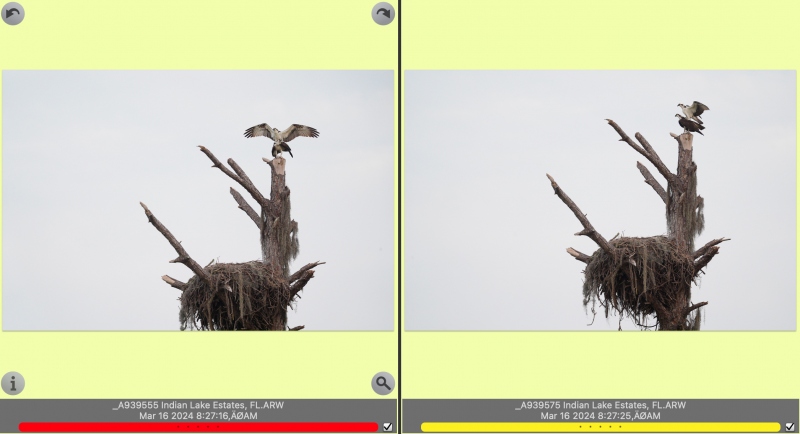
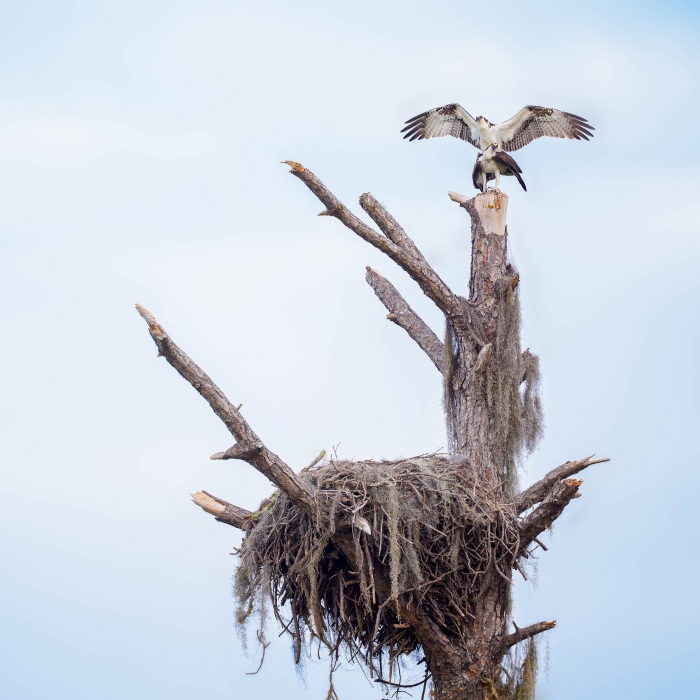
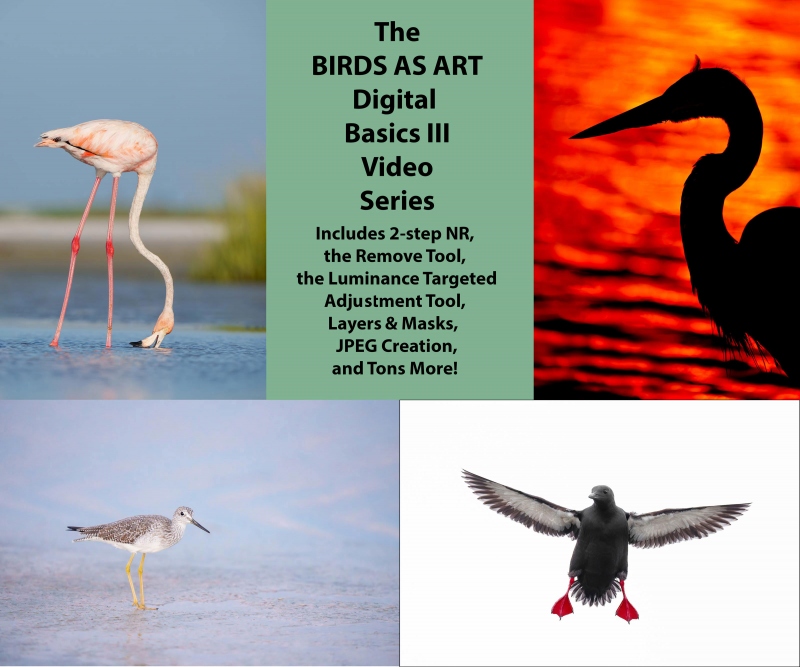
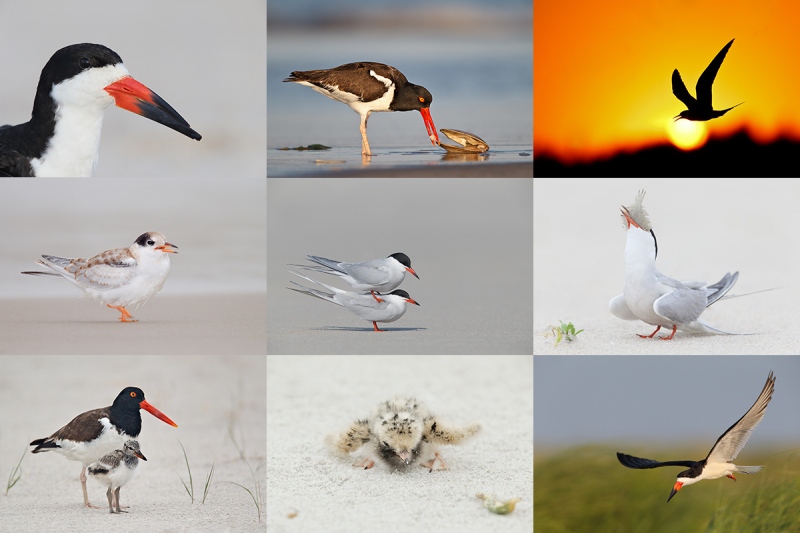
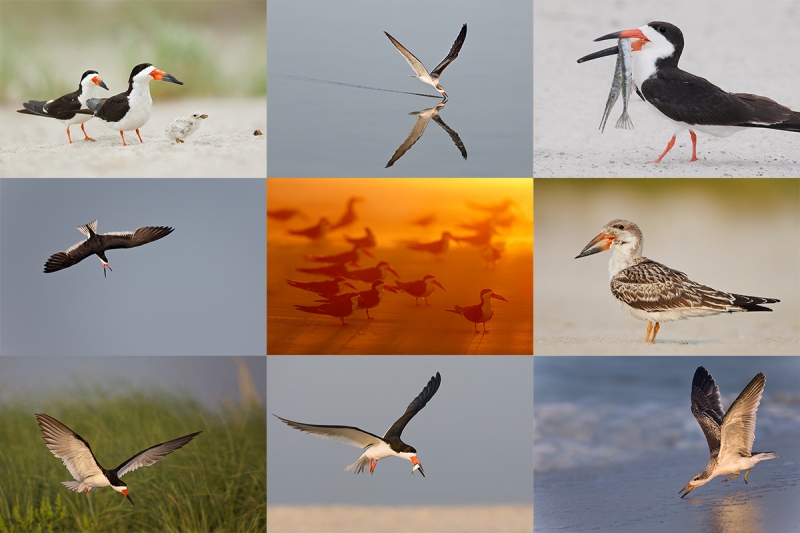
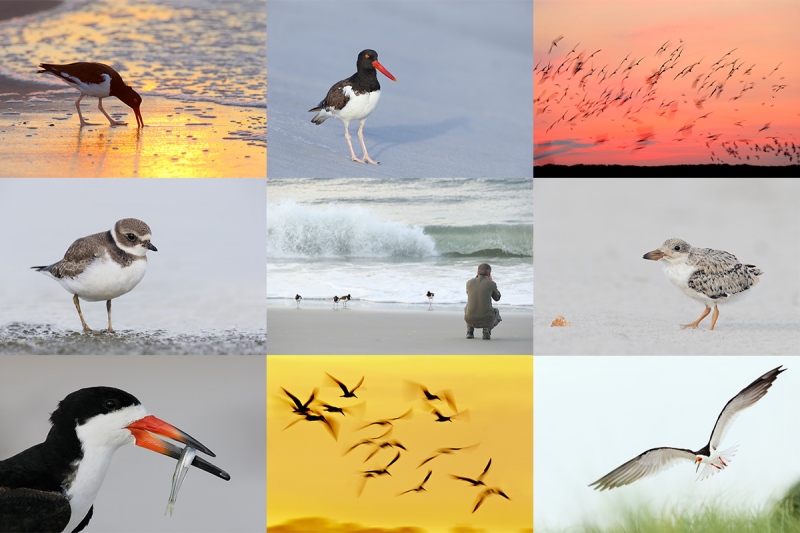
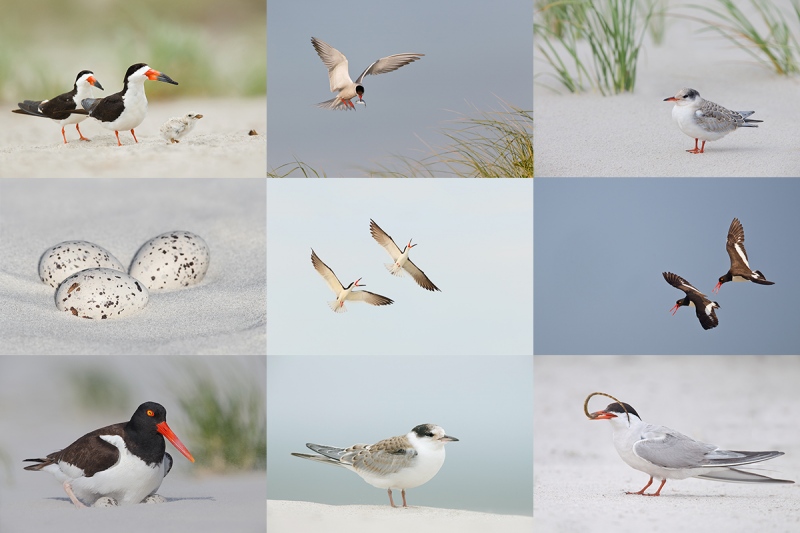
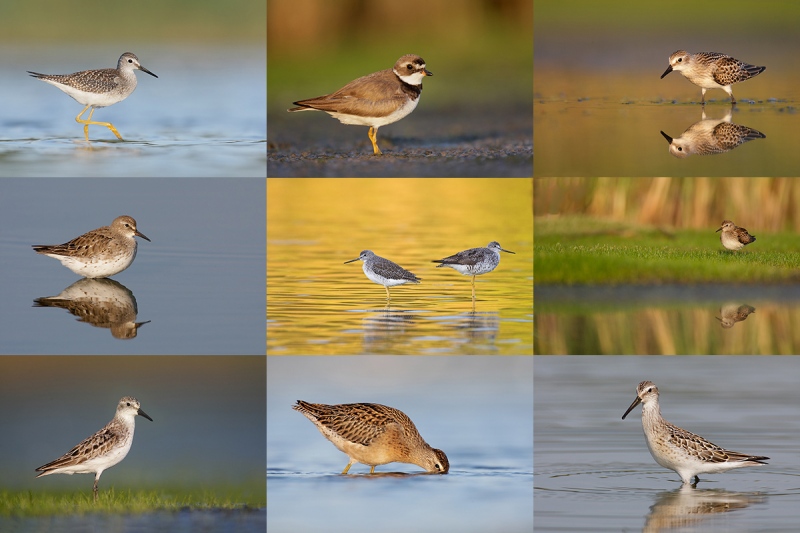
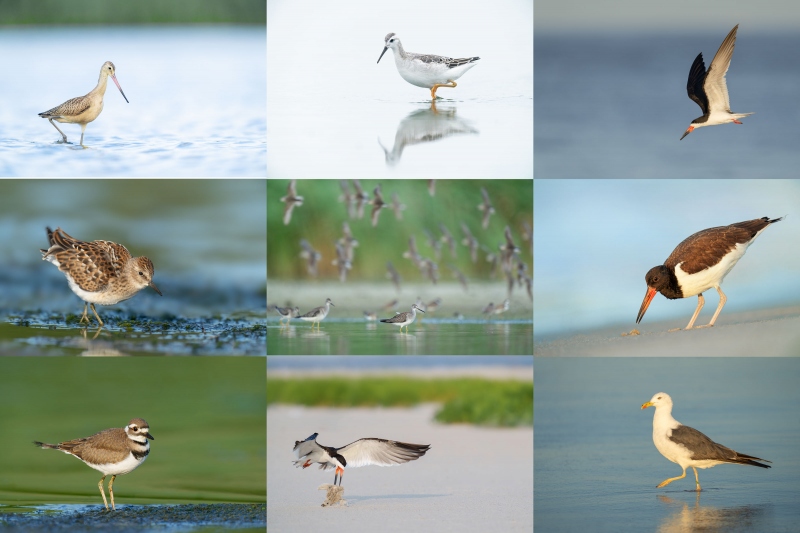













Artie
Pretty cool stuff and i know the excitement after witnessing a pair of Eagles do there thing, however my Eagles were facing away. Bummer
I mean you did get a great shot in the left and the right gooder composed and the end results is great with the nest however do you think any other view would work in a crop?
However interesting and well made 🙂
Also how in the world does one use your Amazon link i cannot find one?
Always with love b
Junk in the trunk is priceless 🙂